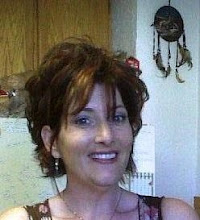palliative care is usually our motto here at PATHS, we are here for heavy care- end of life sever dementia and medically complex. when is it time to go from Palliative to Hospice?
Palliative care: specialized area of health care that focuses on relieving and preventing the suffering of patients. Unlike hospice care, palliative medicine is appropriate for patients in all disease stages, including those undergoing treatment for curable illnesses and those living with chronic diseases, as well as patients who are nearing the end of life. Palliative medicine utilizes a multidisciplinary approach to patient care, relying on input from physicians, nurses, chaplains, social workers, psychologists, and other allied health professionals in formulating a plan of care to relieve suffering in all areas of a patient's life.
palliative care is usually our motto here at PATHS, we are here for heavy care- end of life sever dementia and medically complex. when is it time to go from Palliative to Hospice?
This is a almost non defined line for me and my patients usually defined as continued decline or person's health despite a positive or progressive care-plan or the individuals wishes or family's goals change we then go into hospice
Hospice is a type of care and a philosophy of care that focuses on the palliation of a terminally ill patient's symptoms. These symptoms can be physical, emotional, spiritual or social in nature. The concept of hospice has been evolving since the 11th century. Then, and for centuries thereafter, hospices were places of hospitality for the sick, wounded, or dying, as well as those for travelers and pilgrims. The modern concept of hospice includes palliative care for the incurably ill given in such institutions as hospitals or nursing homes, but also care provided to those who would rather die in their own homes. It began to emerge in the 17th century, but many of the foundational principles by which modern hospice services operate were pioneered in the 1950s by Dame Cicely Saunders. Although the movement has met with some resistance, hospice has rapidly expanded through the United Kingdom, the United States and elsewhere.
either way we celebrate each days joy.
When living at home “aging in place” using family and In home care is no longer the best option, due to increased needs of the individual consider Adult Family Home placement . Alternative to Skilled Nursing, often skilled nursing is not the biggest consideration (it can be coordinated at AFH thru physician) but most often it’s custodial care supervision and safety of the individual. Perhaps the need for a change is: to many falls, cognitive or health decline. Stress on the elderly spouse. Difficulty coordinating professional services. Often we hear the word PLACEMENT and have visions of old fashion nursing homes, bright lights and linoleum floors. This is not at all what AFH are. We are Homes to care for loved ones with a complexity of health or behavior issues. We are the alternative to Skilled Nursing and often are for those who have lived in assisted living but now need more help. Our home is Dementia care Certified, Diabetes Certified, Delegation for Medication Certified, Geriatric Certified etc…We do long term care, palliative care and Hospice
palliative care is usually our motto here at PATHS, we are here for heavy care- end of life sever dementia and medically complex. when is it time to go from Palliative to Hospice?
This is a almost non defined line for me and my patients usually defined as continued decline or person's health despite a positive or progressive care-plan or the individuals wishes or family's goals change we then go into hospice
Hospice is a type of care and a philosophy of care that focuses on the palliation of a terminally ill patient's symptoms. These symptoms can be physical, emotional, spiritual or social in nature. The concept of hospice has been evolving since the 11th century. Then, and for centuries thereafter, hospices were places of hospitality for the sick, wounded, or dying, as well as those for travelers and pilgrims. The modern concept of hospice includes palliative care for the incurably ill given in such institutions as hospitals or nursing homes, but also care provided to those who would rather die in their own homes. It began to emerge in the 17th century, but many of the foundational principles by which modern hospice services operate were pioneered in the 1950s by Dame Cicely Saunders. Although the movement has met with some resistance, hospice has rapidly expanded through the United Kingdom, the United States and elsewhere.
either way we celebrate each days joy.
When living at home “aging in place” using family and In home care is no longer the best option, due to increased needs of the individual consider Adult Family Home placement . Alternative to Skilled Nursing, often skilled nursing is not the biggest consideration (it can be coordinated at AFH thru physician) but most often it’s custodial care supervision and safety of the individual. Perhaps the need for a change is: to many falls, cognitive or health decline. Stress on the elderly spouse. Difficulty coordinating professional services. Often we hear the word PLACEMENT and have visions of old fashion nursing homes, bright lights and linoleum floors. This is not at all what AFH are. We are Homes to care for loved ones with a complexity of health or behavior issues. We are the alternative to Skilled Nursing and often are for those who have lived in assisted living but now need more help. Our home is Dementia care Certified, Diabetes Certified, Delegation for Medication Certified, Geriatric Certified etc…We do long term care, palliative care and Hospice

No comments:
Post a Comment